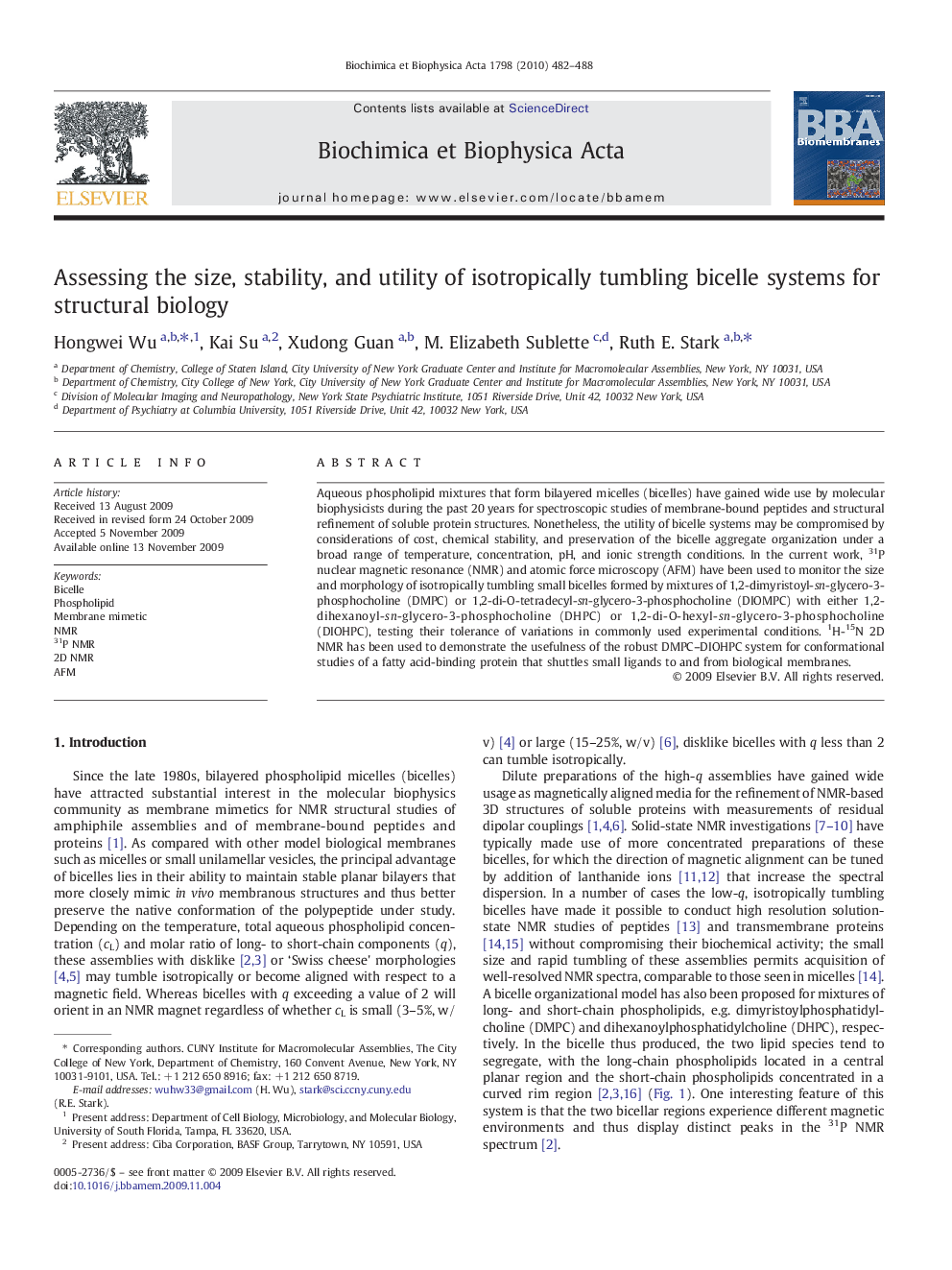| Article ID | Journal | Published Year | Pages | File Type |
|---|---|---|---|---|
| 1944757 | Biochimica et Biophysica Acta (BBA) - Biomembranes | 2010 | 7 Pages |
Aqueous phospholipid mixtures that form bilayered micelles (bicelles) have gained wide use by molecular biophysicists during the past 20 years for spectroscopic studies of membrane-bound peptides and structural refinement of soluble protein structures. Nonetheless, the utility of bicelle systems may be compromised by considerations of cost, chemical stability, and preservation of the bicelle aggregate organization under a broad range of temperature, concentration, pH, and ionic strength conditions. In the current work, 31P nuclear magnetic resonance (NMR) and atomic force microscopy (AFM) have been used to monitor the size and morphology of isotropically tumbling small bicelles formed by mixtures of 1,2-dimyristoyl-sn-glycero-3-phosphocholine (DMPC) or 1,2-di-O-tetradecyl-sn-glycero-3-phosphocholine (DIOMPC) with either 1,2-dihexanoyl-sn-glycero-3-phosphocholine (DHPC) or 1,2-di-O-hexyl-sn-glycero-3-phosphocholine (DIOHPC), testing their tolerance of variations in commonly used experimental conditions. 1H-15N 2D NMR has been used to demonstrate the usefulness of the robust DMPC–DIOHPC system for conformational studies of a fatty acid-binding protein that shuttles small ligands to and from biological membranes.
